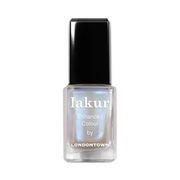Hyaluronic Acid Benefits for Skin
Did you know... Hyaluronic Acid levels in the upper layers of the skin tell everyone how old you are?
OK not quite, however, a recent study found that scientists could accurately predict the skin’s ‘visual age’ purely by looking at the ratio of hyaluronic acid in the epidermis vs the dermis.
That means, plenty of hyaluronic acid use = younger-looking skin. However, it's also about how you apply it that counts. Read below to learn more and use it properly to achieve great results.
So, What is Hyaluronic Acid?
Hyaluronic acid is a compound found naturally in the body known as a ‘glycosaminoglycan’. It’s primarily responsible for skin hydration and health.
Hyaluronic Acid Facts:
- Carries up to 1000x its own weight in water
- Supports healthy collagen and elastin production, and
- Assists with wound healing.
Hyaluronic acid is reduced by sun exposure, dehydration, air conditioning, stress, smoking, poor diet, excessive alcohol consumption, and oh, age. Anything naughty really.
As we age, our skin loses hyaluronic acid levels and with it, the ability to protect itself from the sun, higher levels of inflammation, pigmentation, wrinkles.....*sits in a bath of HA*.
Hyaluronic acid is also something your body produces more of in response to damage or inflammation (like sun exposure) to assist in wound healing. Half of your body’s stores sit in the epidermis and create a healing environment for your skin to make collagen and elastin.
How Does Hyaluronic Acid Work?
Think of your skin like a sponge. You want that sponge full of moisture, soft and pliable, not brittle and hard. Hyaluronic acid is what keeps that moisture in your sponge.
When we have plenty of hyaluronic acid in the epidermis, our skin retains moisture better, looks plumper and heals faster.
Sadly, this wonderful ‘fountain of youth’… how can we say. It dries up. We need to top up hyaluronic acid regularly for our skin to look its best.
As we age or sustain sun damage (or both), we produce less hyaluronic acid and our skin becomes less efficient at holding onto what we’ve got.
So, What Hyaluronic Acid Products Should I Use?
There are many different forms of hyaluronic acid we use in skincare, each with different properties. For best results, we want a combination of hyaluronic acid forms to create maximum moisture and bounce. Let’s look at some great hyaluronic acid products to top us up!

Declaré ‘Ocean’s Best' Hyaluron Triple Booster Serum 50ml


Are You Using Hyaluronic Acid Properly?
Did you know that applying it incorrectly could actually be drying you out?
Hyaluronic acid binds to water, which means is grabs any moisture around it. When applied to dry skin, it has the potential to pull water out of the skin, instead of adding it in. Meaning, you could be drying out your skin even further!
The fix?
Hyaluronic acid should be applied to damp skin so that it seals the water in, instead of pulling water out.
BONUS: Ten Things You (Probably) Didn’t Know About Hyaluronic Acid:
- Hyaluronic acid is found naturally in the body, so it’s easily accepted by sensitive skin types.
- Doctors use hyaluronic acid to help treat osteoarthritis, dry eye, and acid reflux.
- Lip and cheek filler is made of hyaluronic acid (plump lips here we come)
- Half the body’s hyaluronic acid is found in the skin.
- Hyaluronic acid ratios change as we age, so much so that scientists can predict a skin’s ‘visual age’ based on how much hyaluronic acid we have in the upper layers of our skin!
- Hyaluronic acid carries up to 1000x its own weight in water. Some cross-linked forms carry 5 times that i.e. 5000x its own weight in water!
- Your body produces extra HA when it’s injured, as it is amazing for wound healing, pimples and acne scarring.
- Hyaluronic acid stores assist the body in protecting itself from sun damage
- High levels of Hyaluronic acid are associated with better quality collagen and elastin production (that means, firmer bouncier skin)
- It’s natural! There are multiple forms (including vegan ones) so it’s super safe to use.
It's safe to say that hyaluronic acid is a must-have ingredient every skincare routine. Find what works for you and give your skin the hydration it needs to protect it for the long-term!
Need some help putting together the best skincare routine for your skin type? Try our skin quiz!
1 comment
Wow excellent reading most informative thank you so much it was a topic my Freinds were talking about I knew absolutely nothing so when I got home I had to know more. Also the correct use just as important very grateful for this info.
Essence of beauty for everyone.














